This Week’s Game Ads A-Go-Go: “Games You’ve Never Heard Of”
Thursday, August 31st, 2006
Check out the latest Game Ads A-Go-Go column here.

Check out the latest Game Ads A-Go-Go column here.
 Most BBS enthusiasts know that the last outpost for BBSes has been, for some time now, through telnet on the Internet. There was a time, however, when when dial-up BBSes over analog phone lines were the rule, not the exception. And believe it or not, there are still a handful of BBSes out there that have not modernized and switched over to the ‘Net. The only way you can get to them, though, is through an old fashioned analog phone modem, regular ole Ma Bell lines, and a little patience.
Most BBS enthusiasts know that the last outpost for BBSes has been, for some time now, through telnet on the Internet. There was a time, however, when when dial-up BBSes over analog phone lines were the rule, not the exception. And believe it or not, there are still a handful of BBSes out there that have not modernized and switched over to the ‘Net. The only way you can get to them, though, is through an old fashioned analog phone modem, regular ole Ma Bell lines, and a little patience.
Visiting such old BBSes is incredible — it’s like traveling back in time to the early-mid 1990s. Each BBS is a unique a time capsule, stocked with trinkets and ephemera from the period. On message boards, you’ll find posts from 1994 about the O.J. Simpson trial and which player-made Doom levels are best. In file transfer sections you’ll run across large archives of long-forgotten Windows 3.1 screen savers. In door sections (online games), you’ll find abandoned TradeWars 2002 games, still in progress, that haven’t been touched in eight years. And of course, the Ferrengi have completely taken over.

Anyone out there may enter the contest (multiple times is fine by me) by writing a comment on this post. Simply write the best (i.e. funniest) caption you can think of for the image above. The winning caption will be selected by me, and the prize will be your own self-satisfaction in entertaining your peers (until I can figure out some sort of actual reward for this sort of thing). But hey, it’s not the winning that matters, it’s the joy of participating in a community event, right?
So join in the fun. Let’s see what you guys can come up with.
If you use this image on your site, please support “Retro Scan of the Week” by giving us obvious credit for the original scan and entry. Thanks.
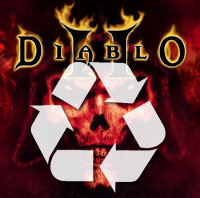 [ In this article, I’m testing a new image preview method. You can see a larger version of most images by hovering your mouse cursor over an image. Please let me know if you encounter any problems with this. — The Editor ]
[ In this article, I’m testing a new image preview method. You can see a larger version of most images by hovering your mouse cursor over an image. Please let me know if you encounter any problems with this. — The Editor ]
Breakthrough technology. Innovative gameplay. Revolutionary features. It seems that every new game claims to incorporate some aspect that players have never seen before. From a marketing standpoint, that’s understandable. We all want value for our money, and what better hook is there than offering a fresh experience? What better enticement is there than a style of game we’ve never seen before?
Wolfenstein 3D and Doom reshaped the gaming market almost overnight by giving players a chance to step into the skin of their character. When Diablo first hit the shelves, one of its biggest selling points was the nearly-unlimited replayability afforded by its randomly-generated maps and quests. And Neverwinter Nights boasts one of the strongest online communities around, due in part to the extremely powerful editing tools that allow users to create adventures every bit as polished as what the game shipped with.
These titles are all examples of truly unique, one-of-a-kind ideas dominating, and changing, the gaming world. Or at least, they would be, if the ideas behind them really were unique. But how many gamers remember titles like Ultima Underworld, Castle of the Winds, Mordor, and Shattered Light?
[ Continue reading Eric’s Look at Recycled PC Game Ideas » ]
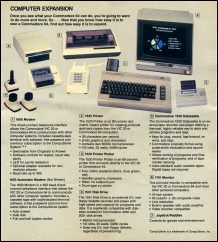 Deep down in the murky depths of an ancient and musty box of Commodore paraphernalia that I’d never before sorted through, I recently discovered a somewhat stained and mildly discolored promotional C64 pamphlet. Who knows how many years it spent rotting in someone’s extra-dank basement before it eventually came into my possession. This particular scan is one set of pages from that very pamphlet, detailing various expansion options for a Commodore 64 computer system.
Deep down in the murky depths of an ancient and musty box of Commodore paraphernalia that I’d never before sorted through, I recently discovered a somewhat stained and mildly discolored promotional C64 pamphlet. Who knows how many years it spent rotting in someone’s extra-dank basement before it eventually came into my possession. This particular scan is one set of pages from that very pamphlet, detailing various expansion options for a Commodore 64 computer system.
The 1701 monitor and it’s successor, the 1702, were (and still are) real workhorse displays. I can’t even begin to fathom how many hours of usage my 1702 has seen over the years (not just from the last ten-plus years of my usage, but from someone else for ten years before that!), but it has held up incredibly well. The picture is bright, steady, and easily adjustable, making it the favorite and most frequently utilized composite video monitor in my collection. With a flat top and steady bottom, it’s highly stackable too, which is a great bonus.
 I particularly like the description of the stylish “1600 Modem,” a 300 bps screamer that apparently came with a “free password and one-hour subscription to the CompuServe system.” Wow, did they say one whole hour? You mean I can stay online for sixty (count ’em, 6-0) minutes!? Well wax me with a grasshopper and call me St. Jocephus.
I particularly like the description of the stylish “1600 Modem,” a 300 bps screamer that apparently came with a “free password and one-hour subscription to the CompuServe system.” Wow, did they say one whole hour? You mean I can stay online for sixty (count ’em, 6-0) minutes!? Well wax me with a grasshopper and call me St. Jocephus.
Actually, now that I think about it, this pamphlet is from when CompuServe cost around $30/hour (in 1982-83 dollars) for connection time, so I guess it was actually a good deal.
If you use this image on your site, please support “Retro Scan of the Week” by giving us obvious credit for the original scan and entry. Thanks.
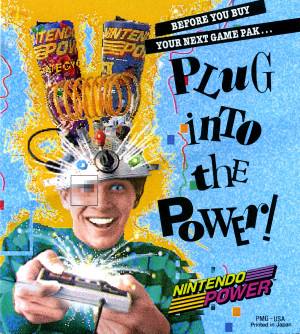
Man, how times have changed.
If you use this image on your site, please support “Retro Scan of the Week” by giving us obvious credit for the original scan and entry. Thanks.
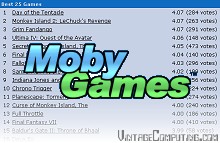 Just yesterday I was browsing through the wonderful video and computer game resource that is MobyGames.com, and I noticed something very peculiar. All of the top 25 most highly rated games of all time on MobyGames were adventure or RPG games, and many of them were just straight up adventure games. All of the RPGs on the list are typically considered “adventure/RPG games” — in other words, RPGs with strong adventure elements. Upon checking again earlier today, a lone exception — Super Mario Bros. — had creeped into 25th place (see screenshot to the side), and as of this writing, it’s risen to rank 22, so the list is fairly dynamic. Still, the clear dominance of adventure/RPGs remains.
Just yesterday I was browsing through the wonderful video and computer game resource that is MobyGames.com, and I noticed something very peculiar. All of the top 25 most highly rated games of all time on MobyGames were adventure or RPG games, and many of them were just straight up adventure games. All of the RPGs on the list are typically considered “adventure/RPG games” — in other words, RPGs with strong adventure elements. Upon checking again earlier today, a lone exception — Super Mario Bros. — had creeped into 25th place (see screenshot to the side), and as of this writing, it’s risen to rank 22, so the list is fairly dynamic. Still, the clear dominance of adventure/RPGs remains.
Conspicuously absent from the list are the usual game pundit “all time” favorites like Tetris, Super Metroid, Castlevania: SOTN, and Super Mario 64. Adventure, a genre that is supposedly “dead” in modern PC gaming, reigns supreme. So what gives?
[ Continue reading MobyGames: “Adventure” the Best Game Genre of All Time? » ]
![]() You guys have probably figured out by now that I try to avoid “link dumps” and the like here on VC&G. But every once and a while something cool comes along that I have to share with you. In this case, it’s PC World’s list of the “25 Greatest PCs of All Time.”
You guys have probably figured out by now that I try to avoid “link dumps” and the like here on VC&G. But every once and a while something cool comes along that I have to share with you. In this case, it’s PC World’s list of the “25 Greatest PCs of All Time.”
The reason for the sneezin’ is the 25th anniversary of the release of the original IBM PC in 1981. However, PC World’s list is extra special because it covers all personal computers from every manufacturer and every era. It’s nice to read something in the mainstream computer press about old computers that isn’t full of misunderstandings, mistakes, and misinformation. PC World actually knows what they’re talking about in this case. And while the list (like any “Top # List”) is far from definitive, it’s still a fun read. So mosey on over to their site and check it out. After that, feel free to comment on what would be in your “top 25” list.
Alas…I possess only ten exact models of the top twenty-five personal computers of all time. I better get crackin’.
![]() [ Please welcome our Greek ambassador of vintage computing, Gnome, to VC&G with his first contribution. ]
[ Please welcome our Greek ambassador of vintage computing, Gnome, to VC&G with his first contribution. ]
Having sold everything (including the right to use his own name) to Amstrad, Sir Clive Sinclair came up with a cunning plan. He would release his next computer under a new company (Cambridge Research) and call it something appropriately Sinclair-ish: Z88.
The Z88, besides being the last computer ever produced under the wise guidance of the Uncle himself, and despite featuring such Sinclair trademarks as a shoddy membrane keyboard and a Zilog Z80A CPU, was quite an interesting and quirky little machine. It also was (well, probably was) the first affordable portable computer — a full-fledged 8-bit laptop, actually, and the true forerunner to modern PDAs.
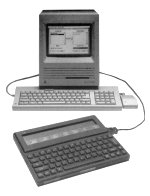 Running on just four AA batteries, the Z88 managed to provide its crisp built-in LCD display (made by Psion) with almost twenty hours of power. Imagine it: true mobile computing, all those years back, in distant 1987, for less than 200 pounds. Other than mobility, the machine featured a powerful spreadsheet / word-processor combo, a calculator, a calendar, file managers, a BBC-micro based BASIC, and a full pseudo-multitasking OS (called OZ) in its tiny ROM. It also had the ability to address up to 4MB of RAM, take ROM cartridges, and communicate with other (admittedly more powerful) computers through a standard RS-232 port.
Running on just four AA batteries, the Z88 managed to provide its crisp built-in LCD display (made by Psion) with almost twenty hours of power. Imagine it: true mobile computing, all those years back, in distant 1987, for less than 200 pounds. Other than mobility, the machine featured a powerful spreadsheet / word-processor combo, a calculator, a calendar, file managers, a BBC-micro based BASIC, and a full pseudo-multitasking OS (called OZ) in its tiny ROM. It also had the ability to address up to 4MB of RAM, take ROM cartridges, and communicate with other (admittedly more powerful) computers through a standard RS-232 port.
 The little beast even got a few games developed for its A4-sized self. Nothing spectacular, mind you, but Toad, ManicMiner, and Scrazble are still worth a look, even if it’s only an emulated one. To actually have said “look,” and for the full emulated pleasure, click here, install the appropriate software, place your PC on your lap, and listen to something from the Pet Shop Boys. It will be worth it, and you’ll be quite the spectacle too.
The little beast even got a few games developed for its A4-sized self. Nothing spectacular, mind you, but Toad, ManicMiner, and Scrazble are still worth a look, even if it’s only an emulated one. To actually have said “look,” and for the full emulated pleasure, click here, install the appropriate software, place your PC on your lap, and listen to something from the Pet Shop Boys. It will be worth it, and you’ll be quite the spectacle too.
A final note: Pixel Magazine (Issue 32, April 1987, seen above) was for years the premier Greek home computing magazine and sadly died along with the Amiga and the 16-bit era.